In the DIY world, color is very important. It makes the end product aesthetically pleasing, whether it’s a candle, soap, beauty products, or a whole lot more. One very famous colorant used for a plethora of DIY products is Mica Powder.
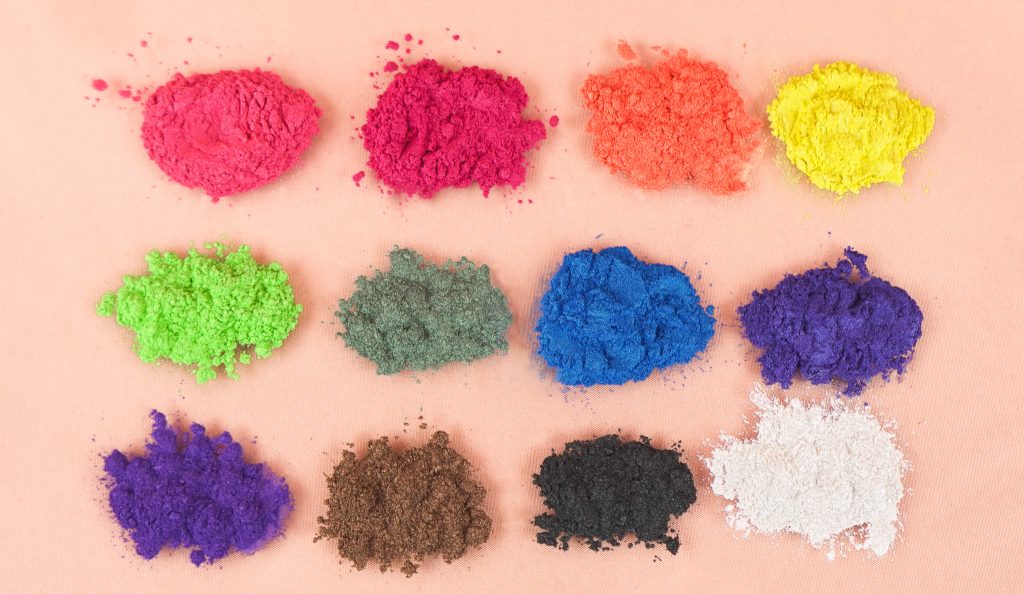
Mica Powder is not only prominently used today in the modern world. It has been used throughout history, down along various civilizations. So, what really is Mica Powder and how is it different from other cosmetic colorants?
What is Mica Powder?
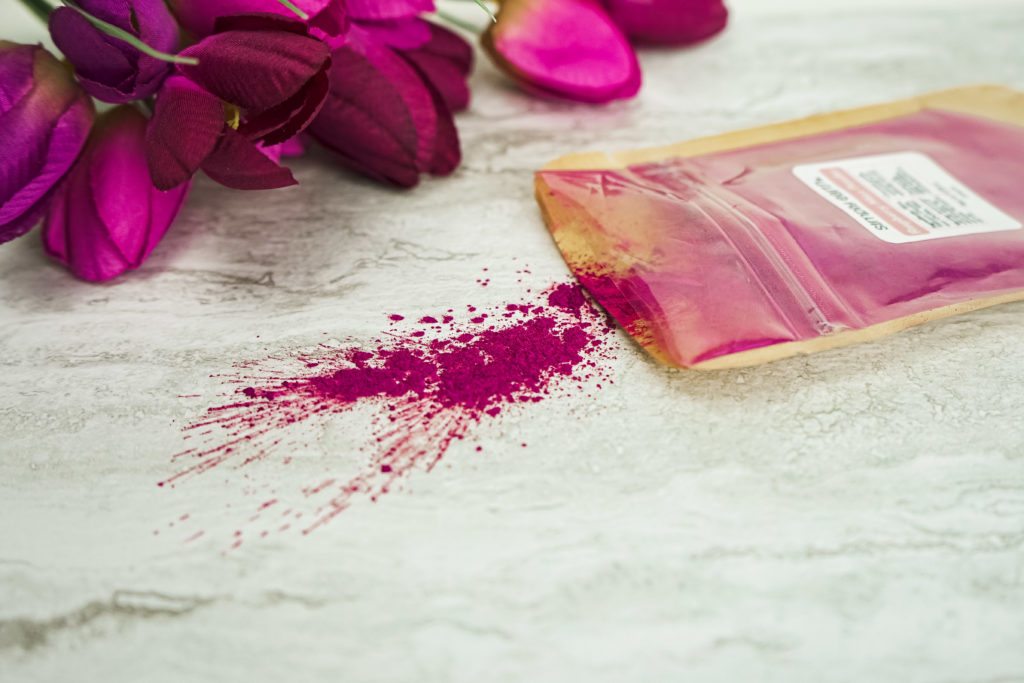
Mica is a naturally occurring mineral known for its shiny appearance and flaky texture. It contains silicate, aluminum, potassium, manganese, water, and iron. When Mica is ground into powder and combined with natural colorant ingredients, you get a soft, very fine glitter-like powder that we now call Mica Powder.
Mica’s natural perlaceous and reflective properties allow for a shimmery, sparkly, and metallic coloring and dyeing effect. Its coloring power is then amplified once mixed with other colorant ingredients. Consequently, Mica Powders come in many colors- just a myriad of coloring options for artists and DIY enthusiasts alike.
Simply Earth Mica Powder Colorants
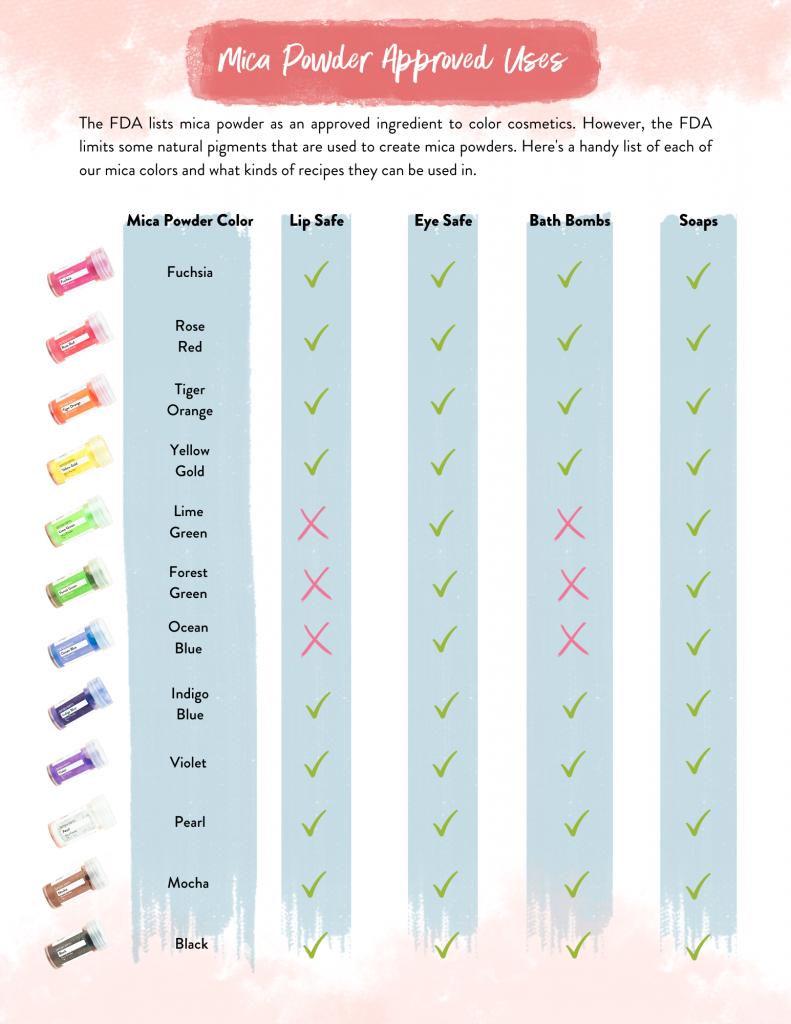
You might also find this article titled “Natural Colorants for DIY Beauty Recipes” helpful.
Mica Powder vs. Synthetic Colorants
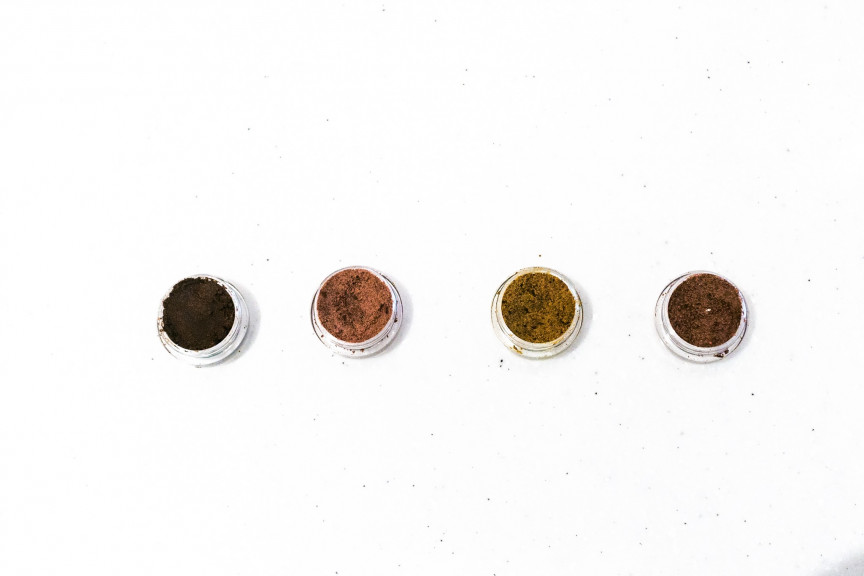
Mica Powder is often mistakenly generalized as a synthetic colorant. It should be noted though that Mica Powder and synthetic cosmetic colorants are two separate things. Mica Powder and synthetic colorants differ in their composition and coloring power.
First off, Mica Powder is created from a ground a shiny metamorphic rock that is then mixed with natural colorants, such as mineral pigments. As a result, Mica Powder often has a sparkle to it and while a little bit of Mica Powder goes a long way, its overall coloring power is less intense than synthetic colorants.
On the other hand, traditional synthetic colorants, like FD&C and D&C dyes and lakes are made from very concentrated colorants. Because for this, synthetic colorants often give more of a matte color. Plus, their coloring power is much more intense. You would need a fraction of a synthetic colorant to produce the same vibrancy as Mica Powder.
Perhaps the biggest difference between synthetic colorants and Mica Powders, however, is that Mica Powders (regardless of whether they are naturally derived or chemically-identical lab made) are generally accepted in natural products while synthetic colorants are not.
How Safe is Mica Powder?
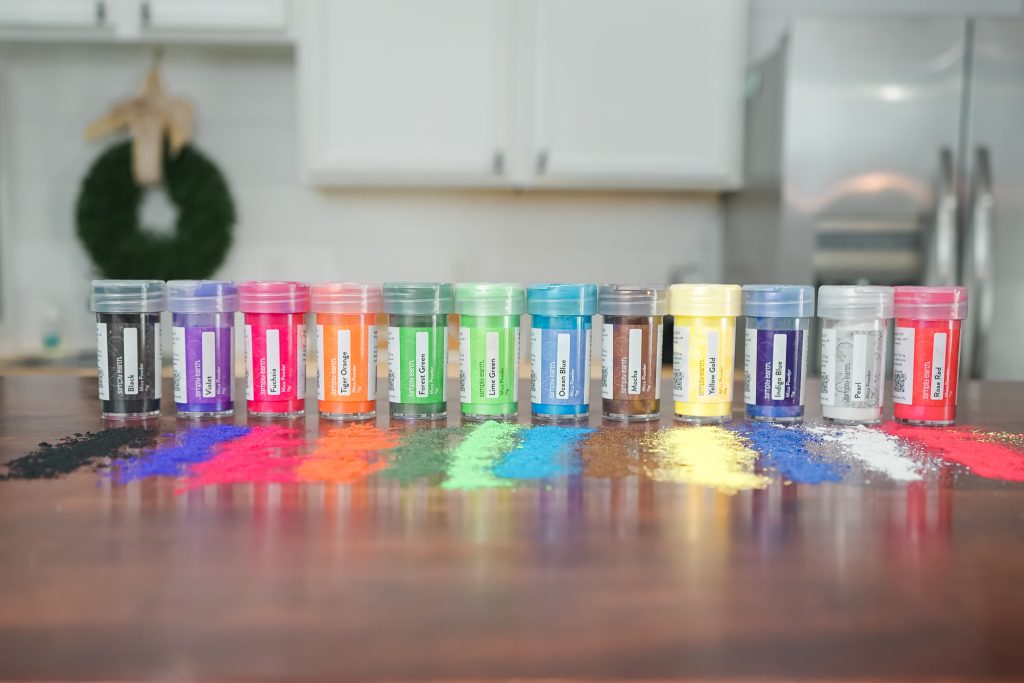
Generally speaking, mica powder is safe to use. In fact the FDA specifically lists mica, and the other natural pigments used in Simply Earth’s Mica Powders, as safe for use in cosmetics (and you can use the chart included earlier in this blog to learn which products you can use each Mica Powder in!) The thing is, however, some mica powder is not ethically sourced. Mica can be safely sourced either as mined mica or chemical-identical synthetic lab-made mica. However, mica is still largely mined by children, and we still have a long way to go to remedy this illegal and horrific practice.
We know many of our Earthies want their recipes to be as natural as possible as well as ethical. So, we, at Simply Earth, are committed to only producing and using 100% natural and child-labor-free mica powder.
Simply Earth’s Pure Promise

Simply Earth provides 100% traceable, ethical, and sustainably sourced natural mica from suppliers with strict no child labor declarations. This means that you can confidently color your creations knowing your Mica Powder was responsibly sourced and colored only with colorants commonly used in natural products.
Check Out This Cheat Sheet!
Ready to dive into the world of color and glitter with mica powder? With the help of this mica powder cheat sheet, now you can!
With this easy-to-follow cheat sheet at your disposal, you’ll soon be creating masterpieces with this magical mineral. Whether you’re a beginner or a pro, your mica powder cheat sheet is here to provide all the tips and tricks you need to dive in and start exploring its awe-inspiring beauty. So go ahead – what are you waiting for? Let’s get artistic!

